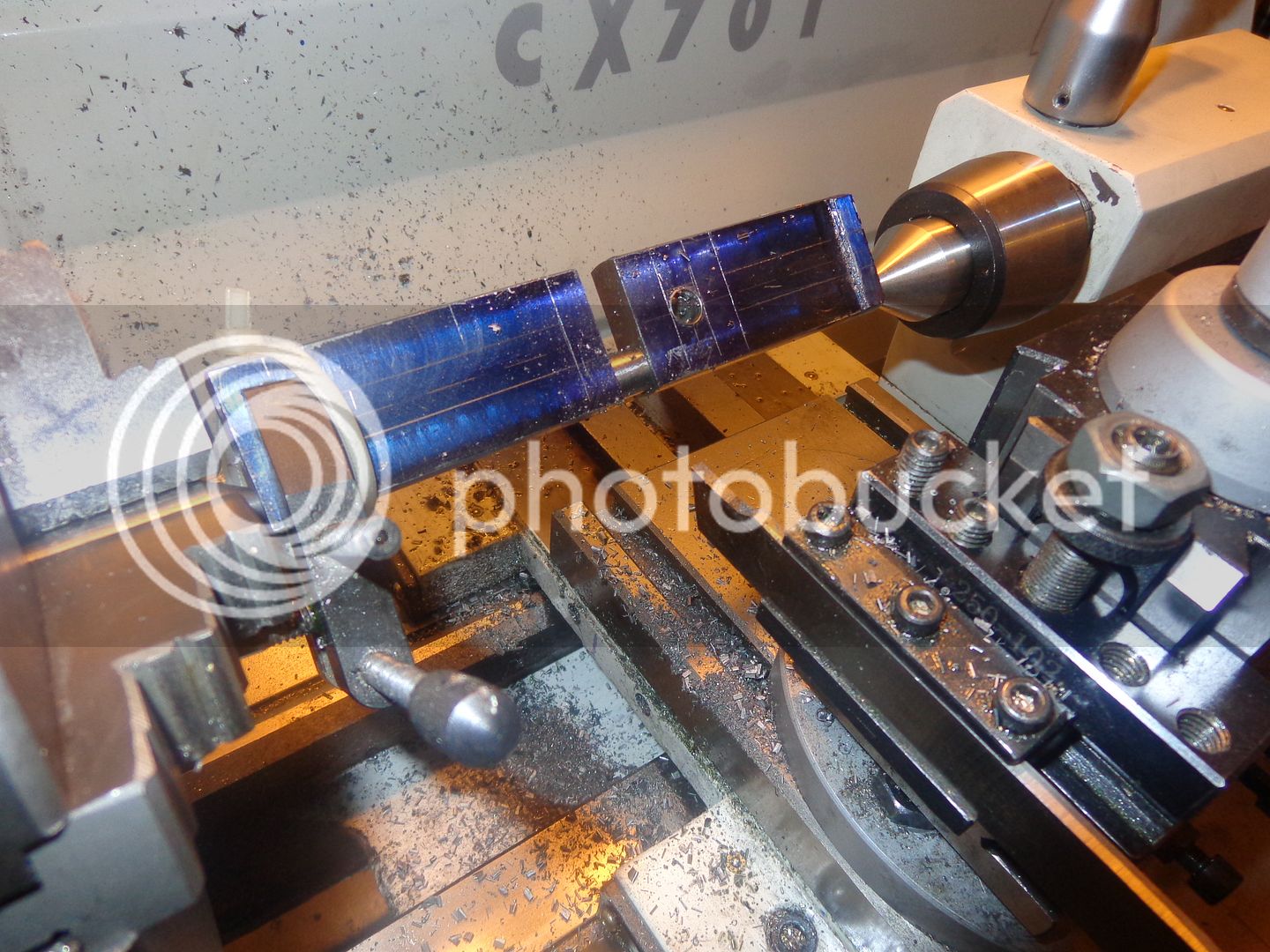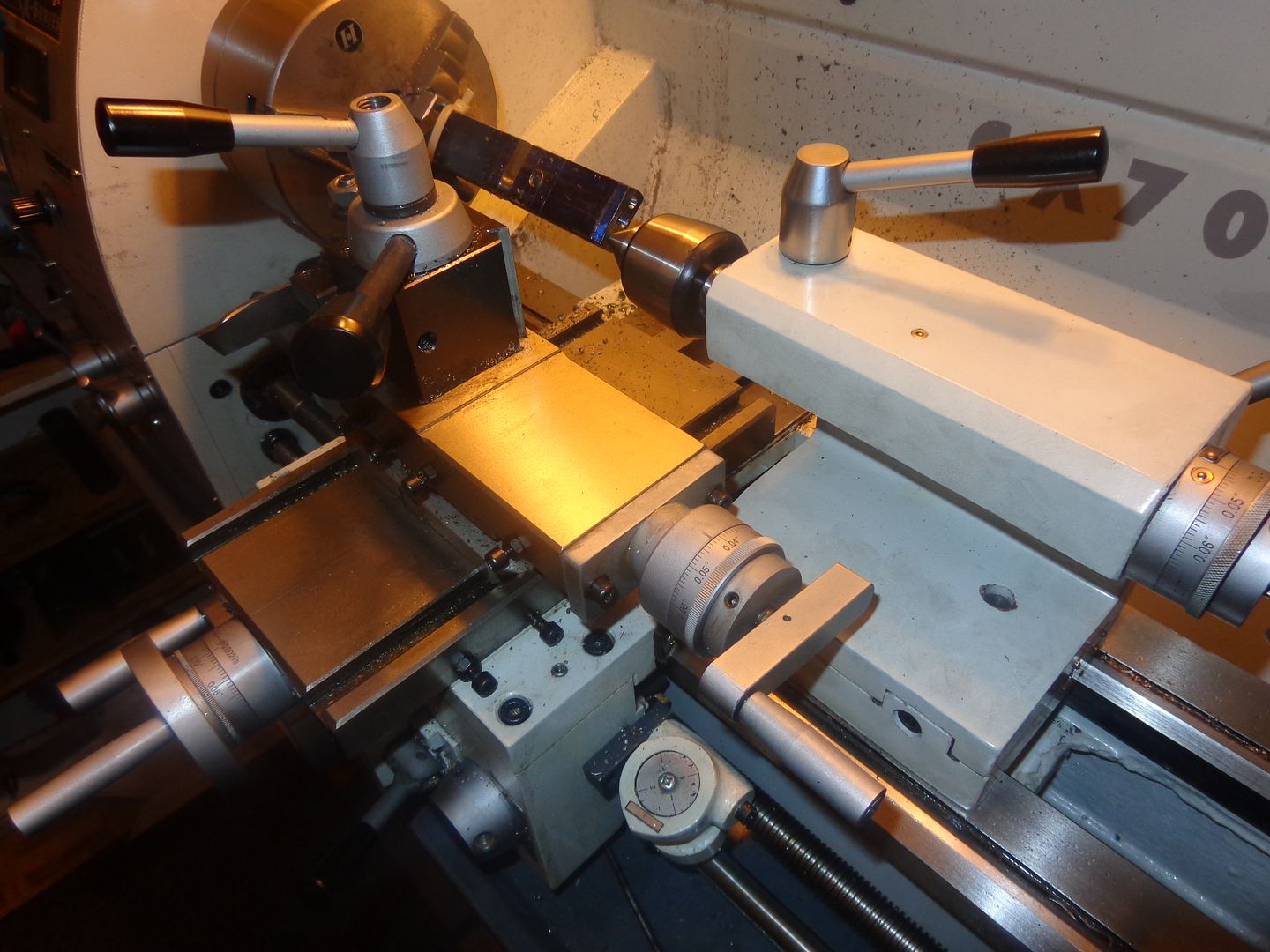I have a problem, and it may not be as large as I see it, but it is a problem nonetheless. This lathe has has no carriage "lock" on it. There is a way to lock the topslide in place and there is a way to lock the cross-slide in place, but there is no way to lock the carriage in place on the ways. This is probably a good marketing strategy for Craftex, because if there was a carriage lock on it, sure as Hell somebody would lock the carriage, forget they had done so, and then engage the power feed and break something. You can "kind of" lock the carriage in place by not engaging the power feed at the gearbox and putting the lever on the front of the apron in "power-feed" position. This stops the carriage from being moved with the big hand-wheel on the front of the apron, but it will move (As measured with dial indicator) 0.019" left to right because of backlash in the power feed mechanism in the apron. This isn't a lot, but it becomes HUGE if you are doing anything like machining the rod journal on a crankshaft, as shown in the pictures. The slot is only .375" wide. The journal when turned to finished diameter will be .375" diameter. This means that to machine it, you must use a tool with a lot of "stick-out" from the tool-holder, because of the offsets in a typical crankshaft. I have machined the "sides" of the journal to finished dimension. Now I have to move the tool in and finish turning the journal to finished size. (It is 0.430" diameter right now.) The tool is .125" wide. So--the tool only has to traverse 0.25" in total left to right to take this finish cut on the diameter. With a good set of carriage stops mounted to the front "way" on the lathe, I could turn the wheel on the apron and move the carriage left to right, depending on the carriage stops to prevent going to far and have the turning crankshaft whack the top of the tool and break something. I find the movement you get by turning the wheel on the front of the apron to be very "coarse" and to not give a very good "feel" for what the tool is actually doing. I prefer to make the tool move left to right or vice-versa by turning the feed handle on the topslide. This gives me a much better control of the tool movement.---I can design and build an adjustable "travel limiter" which I can set up to limit the amount of travel of the topslide very accurately.--But---I still have that damned 0.019" of slop in the carriage to contend with. So--Okay--I can design and build a "carriage lock" that will securely lock the table in place as well---but it must be a "lock" which can slide without damaging the carriage or the ways or the gearbox if the "power feed" does accidentally get engaged. I can do that too--but now it's beginning to become a lot of extra work. This is definitely not a job where the power feed would ever be engaged but, "stuff happens". How do other folks with this lathe, or a clone of it handle this situation?---Brian







![DreamPlan Home Design and Landscaping Software Free for Windows [PC Download]](https://m.media-amazon.com/images/I/51kvZH2dVLL._SL500_.jpg)















































